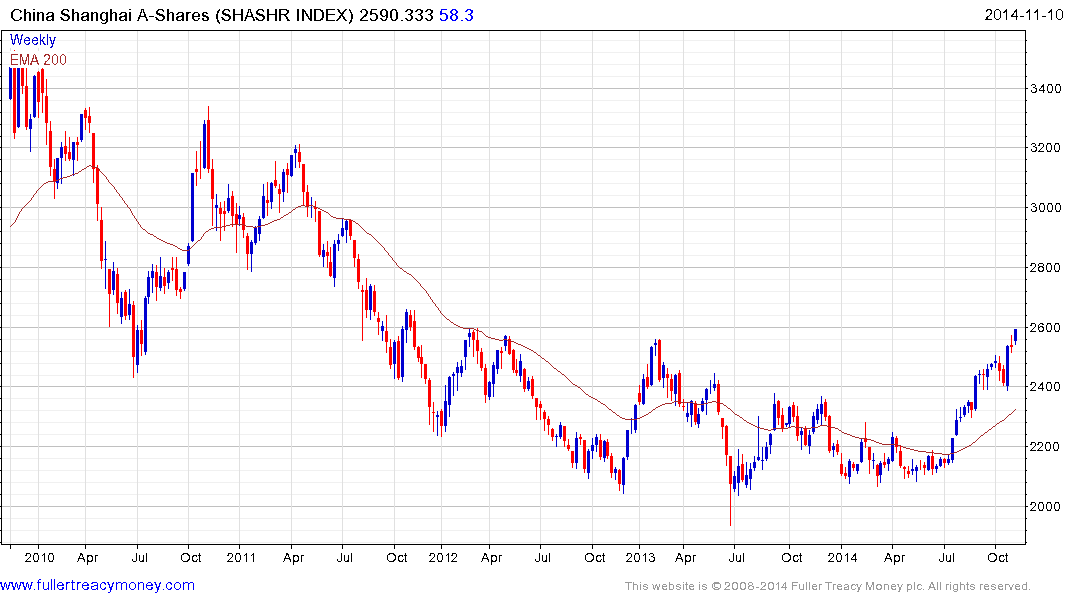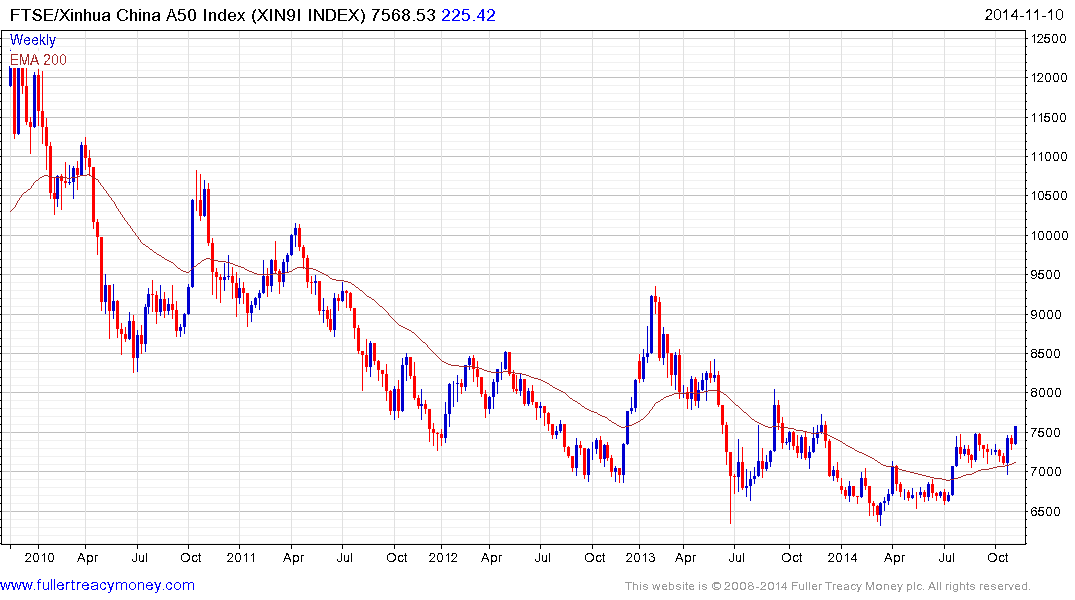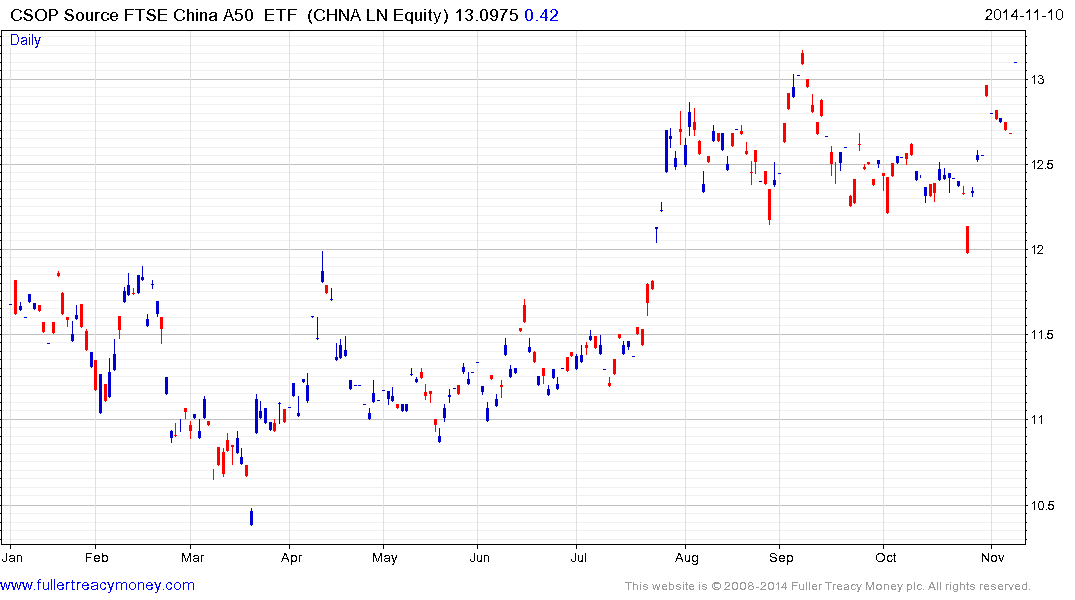Shanghai-Hong Kong Link to Start in a Week as China Opens Up
This article from Bloomberg News may be of interest to subscribers. Here is a section:
The program allowing a net 23.5 billion yuan ($3.8 billion) of daily cross-border purchases will begin on Nov. 17, regulators said in a joint statement today after weeks of investor speculation on the start date. Benchmark indexes in Shanghai and Hong Kong climbed at least 0.8 percent, while Hong Kong Exchanges & Clearing Ltd. surged 4.6 percent. The yuan strengthened as the central bank raised its reference rate by the most since 2010.
The exchange link is one of China’s biggest steps toward opening up the capital account, increasing use of the yuan and turning Shanghai into an international financial center. It will give foreign investors greater access to Chinese companies tied to the nation’s consumer market, which President Xi Jinping is counting on to reduce the dependence of the world’s second- largest economy on exports and infrastructure spending.
“It’s good to see a date,” Mark Konyn, who helps oversee about $92 billion as the chief executive officer of Cathay Conning Asset Management in Hong Kong. “It’s a great innovation. We understand it’s only the first step.”
Shenzhen Link
A Shenzhen equivalent of the Shanghai-Hong Kong link will probably follow within two years, letting more foreign investors buy shares on China’s smaller exchange, according to Bank of America Corp. and Templeton Emerging Markets Group. Japan would also like be part of a trading link with China, the chief executive officer of Osaka Exchange Inc. said on Nov. 5.The Shanghai connect will expand access to Chinese shares from a limited number of institutions to anyone with a Hong Kong brokerage account. The $64 billion Qualified Foreign Institutional Investor program has allowed professional money managers to buy local securities since 2002, while a similar system using offshore yuan began in 2011.
Shanghai-listed equities are heading for the best annual gain since 2009, outpacing shares of mainland companies listed overseas amid speculation valuation discounts on domestic securities will narrow as China opens up. The Shanghai Composite Index has climbed 17 percent this year, versus a 1.9 percent drop in the Hang Seng China Enterprises Index of Hong Kong- listed shares
Many Western commentators have decried the upside potential of the Chinese market as ephemeral. The reasons for this pessimism are well known but include the unsustainable pace of fixed asset investment not least in property and infrastructure and the opacity of the financial sector where loans have been made based on national and regional interests rather than capacity to repay. As they say, “there is no smoke without fire” and the downtrend evident on the A-share Index lent credence to these arguments and was debilitating to confidence.
The Chinese are more aware of the challenges they face than any outsider, which is why the government spent the last three years leaning on the financial and property sectors. Cleaning up heavy industry has the twin purposes of improving public health and targeting some of the most rampant sources of mal-investment. Efforts to support the consumer sector represent an attempt to develop and additional source of growth for the economy as some of its primary drivers have been affected by changing priorities. Meanwhile the market’s valuations are now among the lowest in the world.
Viewed in this light the opening up of the Chinese financial markets to foreign investors and of the global market to Chinese investors represents a way of diversifying risk for the Chinese economy. There will be greater sharing of risk and reward for the domestic economy and private capital will be allowed to diversity beyond China’s borders. This represents a major catalyst for positive investment returns in the stock market.

The A-Share Index rallied to break a five-year progression of lower rally highs by August and continues to hold a progression of higher reaction lows. It bounced emphatically from the 2400 area at the end of October and a sustained move below that level would be required to question medium-term recovery potential.

The UK listed CSOP Source FTSE China A50 ETF tracks the FTSE/Xinhua China A50 Index which invests directly in A-Shares. The Index has been ranging above the 200-day MA since August and broke out today.



